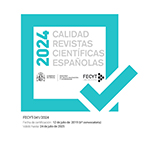The Factory of Time: Temporal Structures in "Aracoeli"
Abstract
Aracoeli, Elsa Morante's last, enigmatic work, and a book of extraordinary complexity (impossible to disentangle in a single perspective), offers elements of extreme interest in terms of an examination of modes of temporality in the context of literary writing. The present paper aims to analyze the theme of time in Morante's novel, by connecting different horizons. First of all, attention shall be paid to the various temporal coordinates of the narrative, which are distributed primarily along three distinct levels: 1) events described in the present and in the first person by the protagonist, with a co-implication of diverse dimensions (private life, external historical context); 2) flash-backs to the past, including the family history preceding the narrator's birth; and 3) a third time, the one of the imaginary dialogue and final encounter with the dead mother. After that I shall explore the two fundamental dimensions in relation to which this (and any) literary text structures itself: those of chronopoiesis (the various ways in which the text creates and manipulates internal temporal perspectives) and exo-temporality (its inevitable dependency on a time and context that, being connected to the future moment of reading, are essentially external and extraneous to it). One can therefore conclude that Aracoeli functions very well (also) as paradigm of the relationship between literature and temporality.Downloads
Article download
License
In order to support the global exchange of knowledge, the journal Cuadernos de Filología Italiana is allowing unrestricted access to its content as from its publication in this electronic edition, and as such it is an open-access journal. The originals published in this journal are the property of the Complutense University of Madrid and any reproduction thereof in full or in part must cite the source. All content is distributed under a Creative Commons Attribution 4.0 use and distribution licence (CC BY 4.0). This circumstance must be expressly stated in these terms where necessary. You can view the summary and the complete legal text of the licence.










